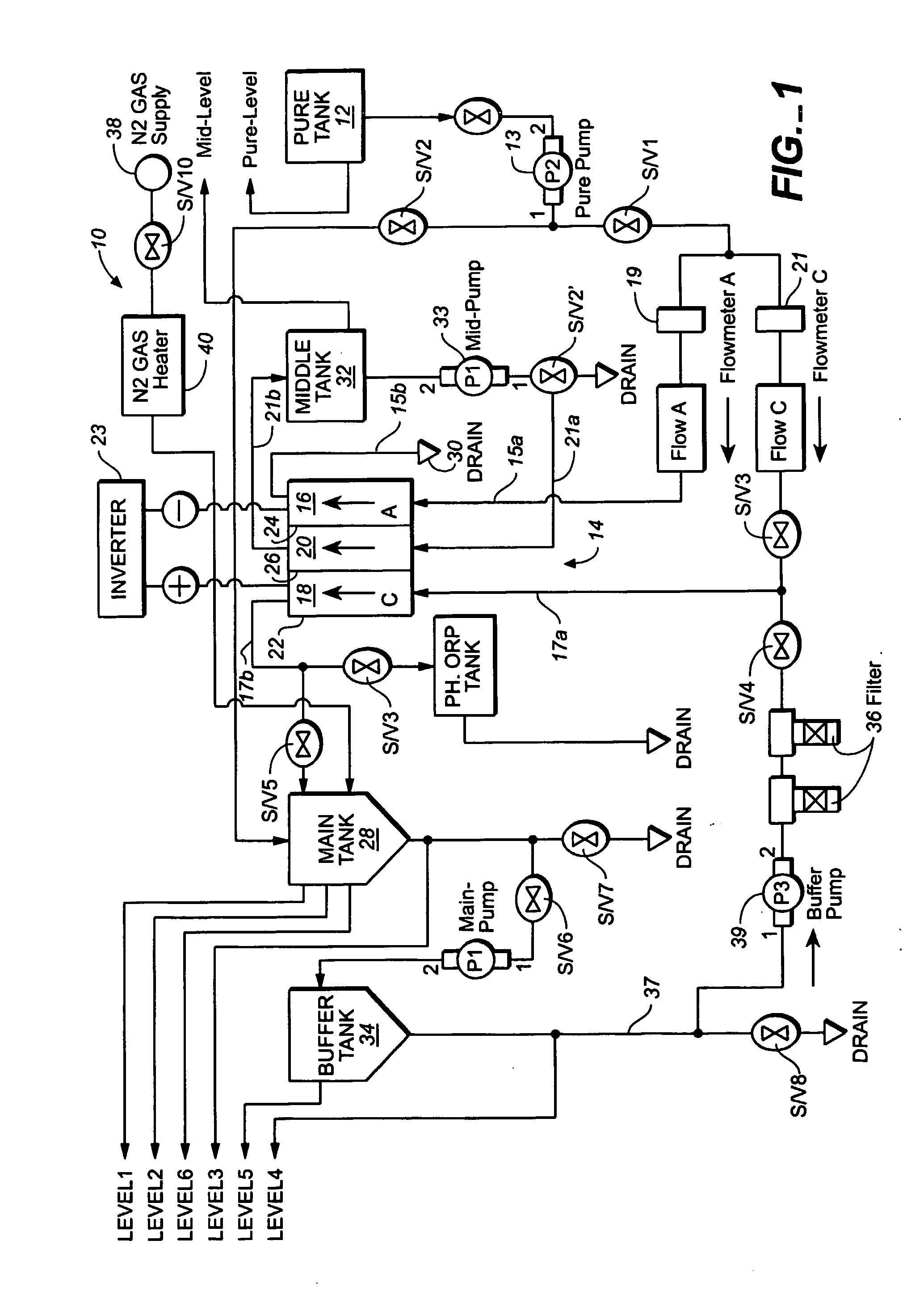Method and apparatus for producting negative and positive oxidative reductive potential (orp) water
a technology of oxidative reductive potential and negative and positive ph, which is applied in the direction of water/sewage treatment by electrochemical methods, instruments, disinfection, etc., can solve the problems of significant drop in ph, difficulty in imposing electrical energy or current through, and inability to obtain practical matter, etc., to achieve effective, efficient and economical
- Summary
- Abstract
- Description
- Claims
- Application Information
AI Technical Summary
Benefits of technology
Problems solved by technology
Method used
Image
Examples
Embodiment Construction
[0033] Referring to FIGS. 1 through 6, wherein like reference numerals refer to like components in the various views, FIG. 1 is a schematic diagram of the inventive apparatus for producing positive and negative ORP water of the present invention. This view shows that the inventive device, generally denominated 10, comprises a unique electrolysis system which utilizes a three-chambered electrolysis unit or cell specifically adapted for producing ORP water. The system includes a water inlet tank 12 in fluid communication with an electrolysis unit 14 having an anode chamber 16, a cathode chamber 18, and a saline solution chamber 20 interposed between the anode and cathode chambers.
[0034] Referring now to FIGS. 1, 3 and 4, the three chambers of the electrolysis unit are enclosed in a housing 22 in which are inserted a metal anode electrode membrane 24 facing the anode chamber, a first ion exchange membrane 25 approximated or mated to the anode electrode and separating the anode chamber...
PUM
| Property | Measurement | Unit |
|---|---|---|
| flow rate | aaaaa | aaaaa |
| pH | aaaaa | aaaaa |
| flow rate | aaaaa | aaaaa |
Abstract
Description
Claims
Application Information
 Login to View More
Login to View More - R&D
- Intellectual Property
- Life Sciences
- Materials
- Tech Scout
- Unparalleled Data Quality
- Higher Quality Content
- 60% Fewer Hallucinations
Browse by: Latest US Patents, China's latest patents, Technical Efficacy Thesaurus, Application Domain, Technology Topic, Popular Technical Reports.
© 2025 PatSnap. All rights reserved.Legal|Privacy policy|Modern Slavery Act Transparency Statement|Sitemap|About US| Contact US: help@patsnap.com



